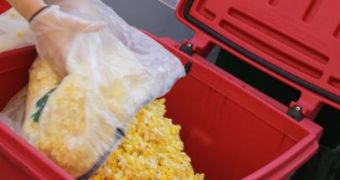Ohio State and Sodexo have initiated the Zero Waste campaign, which aims to divert 90 percent of Ohio Stadium's gameday waste away from landfill. This season efforts have diverted 70 percent of waste away from landfills after only three games.
According to detailed Ohio State evaluation reports, the game against Akron resulted in a 76 percent diversion rate, a total of 17.2 tons collected with 13.9 tons diverted with 4.1 tons going to landfill.
The game against Toledo resulted in a 63 percent diversion rate, resulting in 13.2 tons collected with 8.8 tons diverted and 4.8 tons going to landfill. The Colorado game resulted in a 72 percent diversion rate with 11.7 collected and 9.4 diverted and 3.6 tons going to the landfill.
"Ohio State has already made major strides already toward reducing waste going to the landfill," said Corey Hawkey, Ohio State's sustainability coordinator for energy services and sustainability. "Diverting trash completely – with 105,000 fans in attendance – is a challenge but we're confident that this program will be successful."
Two waste streams have been designated for this football season: compost and recycling. Stations have been set up near concessions stands to encourage fans to recycle and compost.
The message is simple: If it looks like food or paper, then compost it. If it looks like plastic, metal, or glass, then recycle it. Trash stations have been removed from the stadium.
"When in doubt, we ask fans to recycle it, and the contamination will be sorted out at the recycling facility," said Danny Phillips, Sodexo general manager at Ohio Stadium. "Behavior change by employees and fans is the key to success and we'll keep working at it until we reach our partner's goal."
Sodexo trained more than 600 employees and volunteers over the summer to prepare for the Zero Waste program and the company reinforces the effort with refresher training before each game to send the least amount of waste to landfill.

 14 DAY TRIAL //
14 DAY TRIAL //